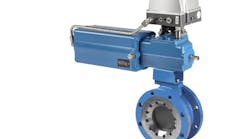The case involving the failure of multiple manual valves (described in last month's column) was interesting in that you never really know what is going to happen when the case gets to trial. Although you may never see the inside of a courtroom, you never know what will happen when others in your plant or organization review your ideas in the course of your everyday work.
The plaintiff sued for a multimillion-dollar settlement. The case was complicated in that there were two defendants; however, my client (one of the defendants) had already agreed to some amount of fault on a related matter that could have been settled separately but was instead included in the lawsuit — likely because my client was much larger than the other defendant.
The lawyer instructed me to prepare a technical presentation that would be presented at some time during a two-week trial to explain to the jury what happened (in layman’s terms) and why my client was not at fault for the valve failures. I was also fully expected to be at the trial for a few days to hear other technical testimony so it could be rebutted if necessary. In my opinion, there were clear technical facts that assigned fault to the other defendant and the plaintiff — not to my client.
Interestingly, not only did I not testify but also my attendance at the trial was not needed at all. My understanding is that the plaintiff made the case for how and when the defendants should have fixed the problem and did not focus at all on which party or parties was technically at fault. The jury reportedly decided against the plaintiff because the defendants offered to fix the problem but the plaintiff replaced all of the valves quickly without allowing an opportunity for the defendants to resolve the problem, even though, in my technical opinion, the other defendant caused the problem.
In the end, the plaintiff likely spent hundreds of thousands of dollars in legal fees and experts and had nothing to show for it. Such are the risks of litigation.
David W. Spitzer is a principal at Spitzer and Boyes, LLC, which offers engineering, focused market research, writing/editing white papers, strategic marketing consulting, distribution consulting, seminars and expert witness services for manufacturing and automation companies. Spitzer has written more than 400 technical articles and 10 books about flow measurement, instrumentation and process control. He can be reached at 845-623-1830 or via spitzerandboyes.com.


